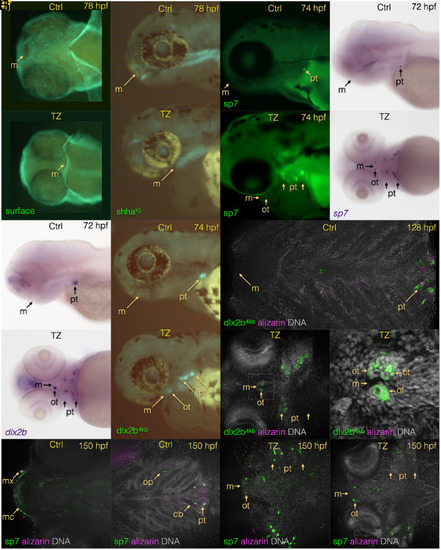Fig. 2.
- ID
- ZDB-FIG-240319-47
- Publication
- Jackman et al., 2024 - Blocking endogenous retinoic acid degradation induces oral tooth formation in zebrafish
- Other Figures
- All Figure Page
- Back to All Figure Page
|
TZ exposure changes the position of the mouth and induces oral tooth formation in zebrafish. TZ treatment starting at 24 hpf results in a posteriorly positioned mouth by 78 hpf (surface staining |

